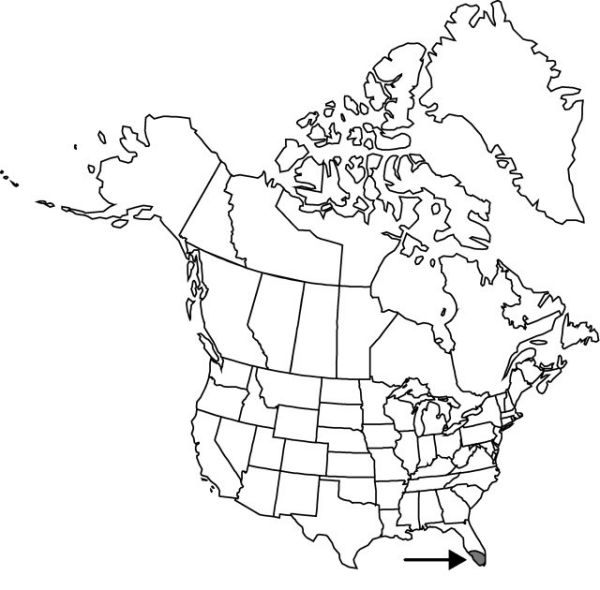Cranichis muscosa
Prodr., 120. 1788.
Plants to 50 cm. Roots 2–3 mm diam. Leaves 4–8, basal; petiole erect; blade spreading, broadly elliptic with several prominent arching veins, 2–9 × 1–4 cm. Inflorescences glabrous; scape bracts leafy, short; raceme 1–15 cm; floral bracts lanceolate, shorter than ovary. Flowers mostly white, glabrous; dorsal sepal 3-veined, elliptic-lanceolate, 3–4 × 1.5–2 mm; lateral sepals 3-veined, obliquely ovate-lanceolate to ovate, 4 × 2 mm; petals 1-veined, linear, 2–3.5 × 1 mm, margins facing lip minutely ciliate, apex blunt; lip white, spotted green or pale yellow, ovate-subquadrangular, to 4 × 2.5 mm, distal margins undulate; column prominently winged, 1.5–2 mm; pollinia yellow, elongate; pedicellate ovary 3–6 mm. Capsules erect-spreading, ellipsoid-cylindric, 8–10 × 3–4 mm.
Phenology: Flowering Jan–Mar.
Habitat: Hardwood hammocks
Elevation: 0–20 m
Distribution

Fla., Mexico, West Indies, Central America, South America.
Discussion
When plants are grown isolated from potential pollinators, nearly all flowers form fruits. After the anther dehisces, the pollinarium bends over and contacts the stigma (J. D. Ackerman 1995). An attempt to relocate historical localities of Cranichis muscosa in Miami-Dade and Lee counties was unsuccessful (C. A. Luer 1972), and more recent searches have also been unsuccessful.
Selected References
None.
